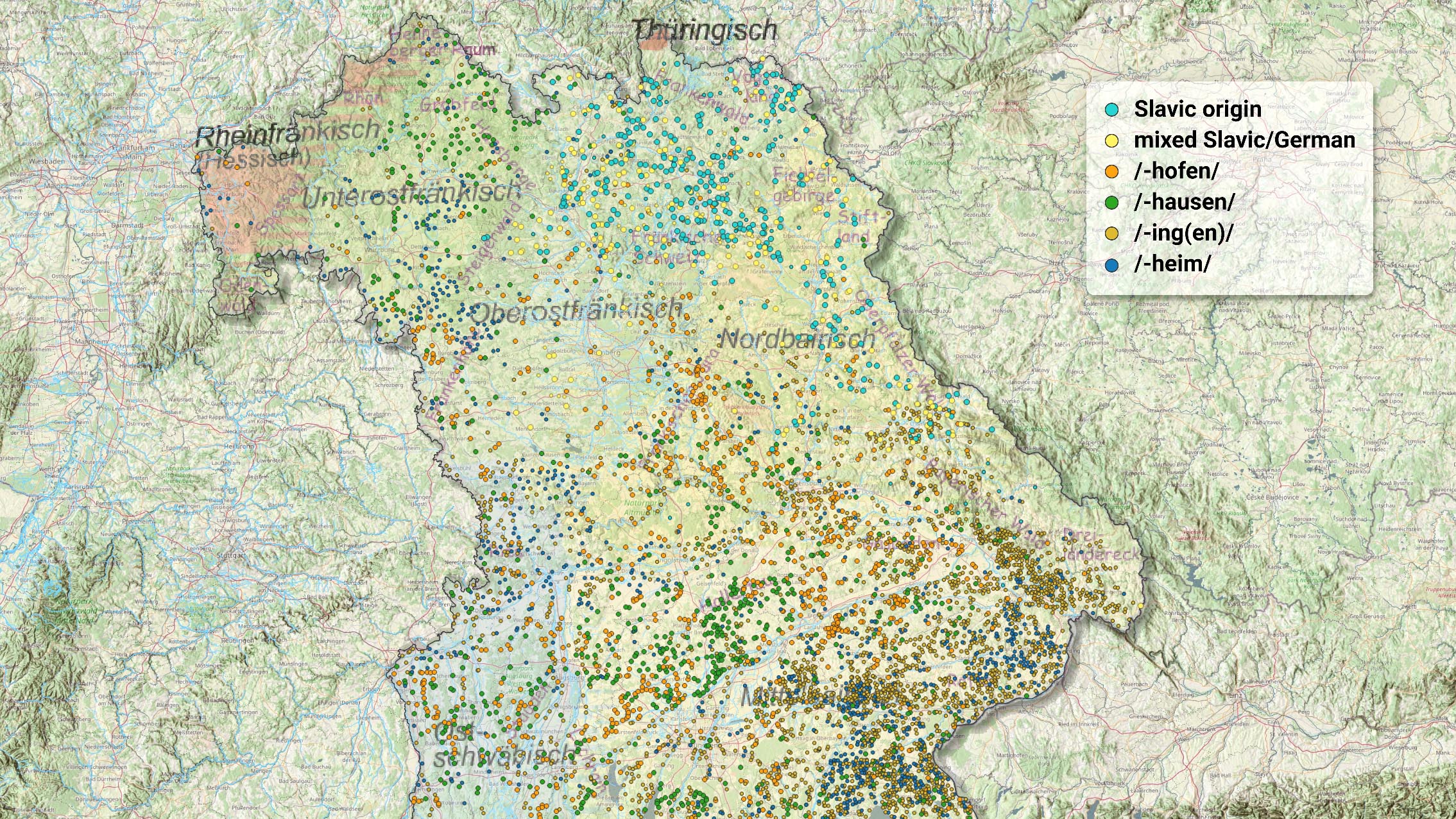Project
and material culture
Team members
| Heidelberg/Prague: | Nicolas M. Jansens, M.A. (PI) |
| Prague: | Mgr. Martin Petr Janovský, Ph.D. Mgr. Viktorie Janovská Mgr. et Mgr. Bc. Soňa Wojnarová doc. PhDr. Tomáš Klír, Ph.D. (Mentor) |
This project continues the cooperation of Charles University with Heidelberg University in bringing together the disciplines of archaeology and toponomastics to test theories explaining the early spread of Slavic culture and language.
Using the tools of modern data sciences and statistical analysis, it investigates two language contact zones on the outer reaches of early medieval Slavic settlement: the eastern frontier of the Franconian Empire and the trade and settlement zone of the north-eastern Baltic Rim. In the former region, the use of Slavic ceased already by the 12th century, and so the toponymic system contains elements of only early Slavic name-giving. In the latter, it is Slavic that persisted within the contact zone, while integrating the settlements of the local substrate population over time.
Through geospatial analysis of the distribution of early Slavic vs. other name types in comparison to archaeological evidence, we aim to discover new diagnostic patterns for revealing early sites of Slavic settlement. We also pursue the question of what the toponymic outcomes of language contact scenarios can reveal about the sociolinguistic contexts from which they emerged.
Project outputs
[1] Jansens, Nicolas M. Forthcoming. ‘Insights from Quantitative Toponomastics: Getting off the Ground with Open Data’. In Linguistische Beiträge zur Slavistik. 29. Jungslavist*innen-Treffen in Bochum (Zoom), 09.-10. September 2021, edited by Christina Clasmeier and Julia Golbek, ca. 24 pp. Berlin etc.: Peter Lang.
[2] Janovská, Viktorie, Nicolas M. Jansens, Martin Janovský, and Tomáš Klír. Forthcoming. ‘Spatial Analysis of Archaeological and Linguistic Data Reveals the Boundaries of Frankish Power in Northern Bavaria’. In Power in Numbers. State Formation and Christianisation on the Eastern Edge of Europe, edited by Mária Vargha and Ivo Štefan, ca. 18 pp. Turnhout: Brepols.
[3] Janovský, Martin, Nicolas M. Jansens, Viktorie Janovská, and Tomáš Klír. Submitted. ‘A Landscape of Two Linguistic Worlds and its Investigation Using a Clustering Method: A Contribution to the Possibilities of DBSCAN in Archaeological-Linguistic Research’. Journal of European Landscapes, ca. 12 pp.
[4] Jansens, Nicolas M., Soňa Wojnarová, Viktorie Janovská, and Martin Janovský. Submitted. ‘Geonames as a Resource for Historical Toponomastics: The Slavic Topoformant *‐ьščina’. Acta Onomastica, ca. 24 pp.
[5] Jansens, Nicolas M., Soňa Wojnarová, Viktorie Janovská, and Martin Janovský. Submitted. ‘The Ves′ in Historical and Linguistic Perspective: Documentary Evidence and Linguistic Analysis’. Acta Onomastica, ca. 37 pp.
Project datasets
The quantitative analyses in our project were carried out based on archeological and toponomastic datasets compiled from the scholarly literature and, in the latter case, using freely available open gazetteer data annotated with respect to various linguistic categories. Although they largely remain a work in progress, the latest versions are available here:
- Toponomymic dataset for Bavaria (status: 2022-01-11) – sources: GeoNames, Bavarikon – used in: [1], [2], [3].
- Toponomymic dataset for Schleswig-Holstein (status: 2022-03-23) – sources: OSMNames, GeoNames – used in: [1].
- Toponomymic dataset for Volkhovskij rajon (status: 2022-03-23) – sources: ГКГН, GeoNames, OSMNames – used in: [1].
- Toponomymic dataset pertaining to the formant -ŠČINA (status: 2023-03-10) – source: GeoNames – used in: [4].
- Toponomymic dataset of uročišča in Belarus (status: 2023-03-14) – source: Дикусар et al. 2017. Топонимика урочищ республики Беларусь – used in: [4].
- Dataset of gravesites for Bavaria (status: 2021-10-22) – used in: [2], [3].
- Dataset of gravesites for Volkhovskij rajon (status: 2021-12-15).


